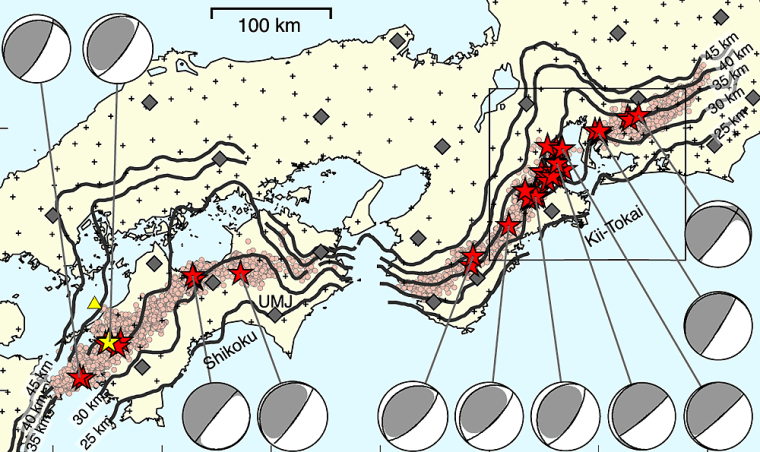Japanese researchers have discovered a new and sluggish kind of seismic activity that helps reveal the inner workings of faults capable of producing massive earthquakes like the one that generated the 2004 Indian Ocean tsunami.
The so-called “very low-frequency” earthquakes join two other types of slow quakes previously detected in the deep portion of subduction zones, where one section of Earth’s crust dives under another. The new kind of seismic activity can itself produce earthquakes of magnitudes 3 to 3.5, but the temblors are too slow to produce shaking felt by humans.
Researcher Yoshihiro Ito said the newfound activity, along with the two other phenomena — non-volcanic deep tremors and slow slip — may contribute to the buildup of stress in what are known as megathrust quake rupture zones.
“We are considering the monitoring of these activities to have an accurate grasp of the stress condition for the megathrust rupture zone,” Ito said in an e-mail interview. Ito and colleagues from Japan’s National Research Institute for Earth Science and Disaster Prevention describe their work this week in Science Express, the online edition of the journal Science.
The snap release of slowly accumulated stresses in megathrust zones, like the Cascadia subduction zone in the Pacific Northwest, can produce massive earthquakes. The last such quake, a magnitude 9, struck that area in 1700.
The study details seismic activity measured along the Nankai subduction zone in southwest Japan, using a network set up after the 1995 Kobe earthquake. Similar activity likely also occurs in the Cascadia subduction zone.
The new kind of seismic activity coincides in time and location with the two previously described kinds of slow quakes. Taken together, they should allow researchers to better track the increase of stress that can make big quakes more likely.
“We can put a picture together to track where stress is changing,” said John Vidale, director of the Pacific Northwest Seismic Network, who was not connected with the research.
Earthquakes still can’t be predicted. But Ito said the new work helps to unravel how subduction works.
“We must know the behavior of the subducting plate to predict earthquakes,” Ito said.
